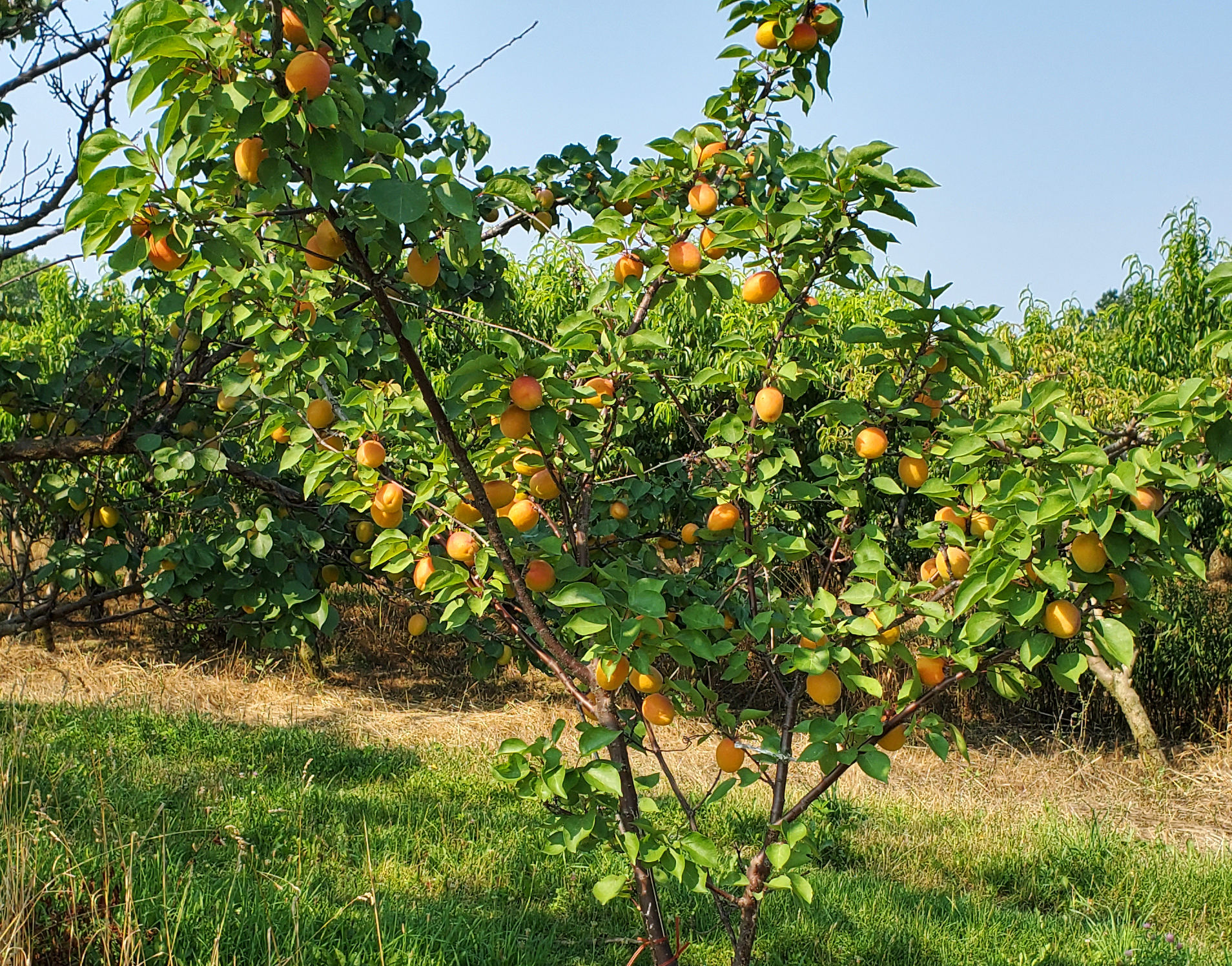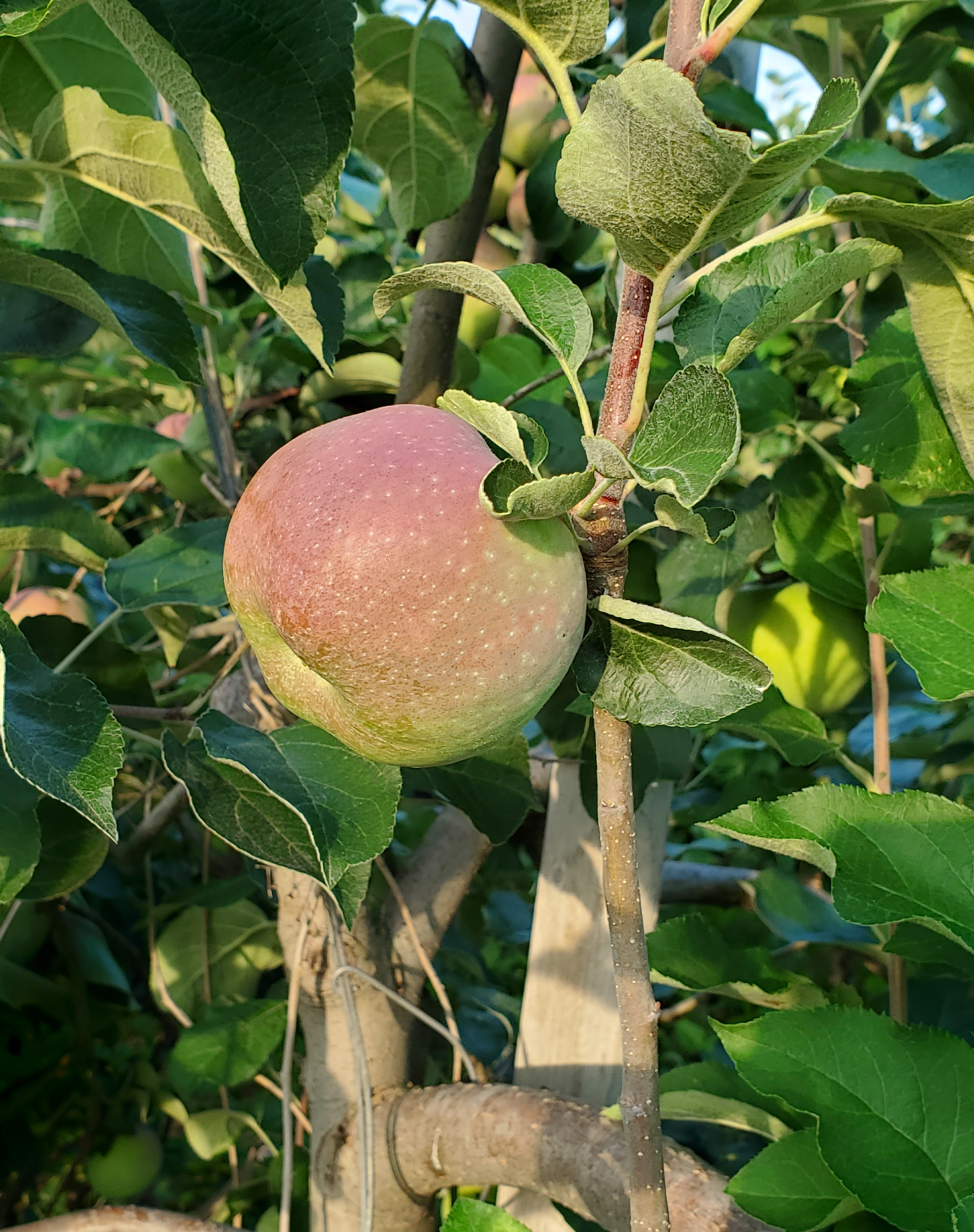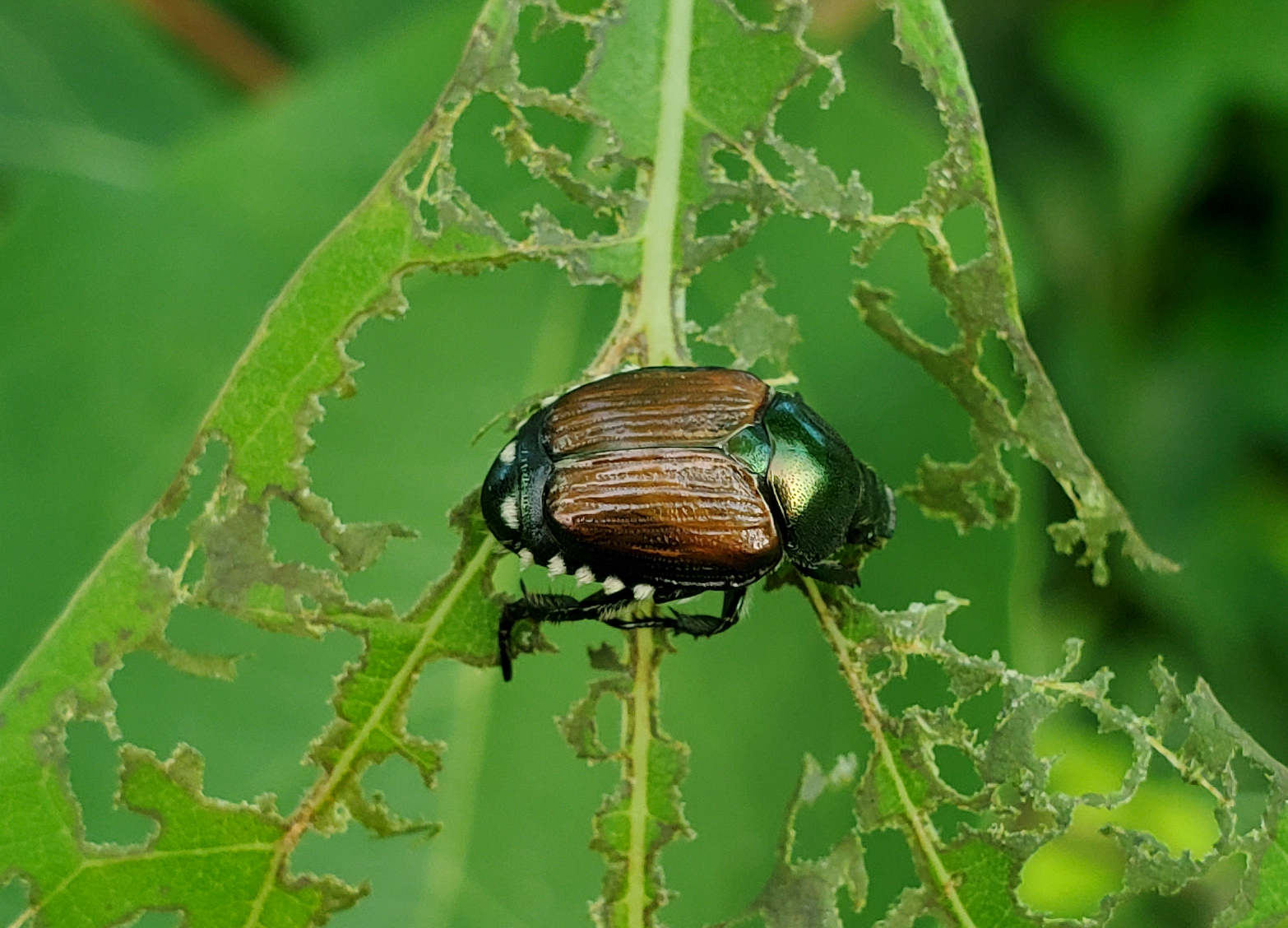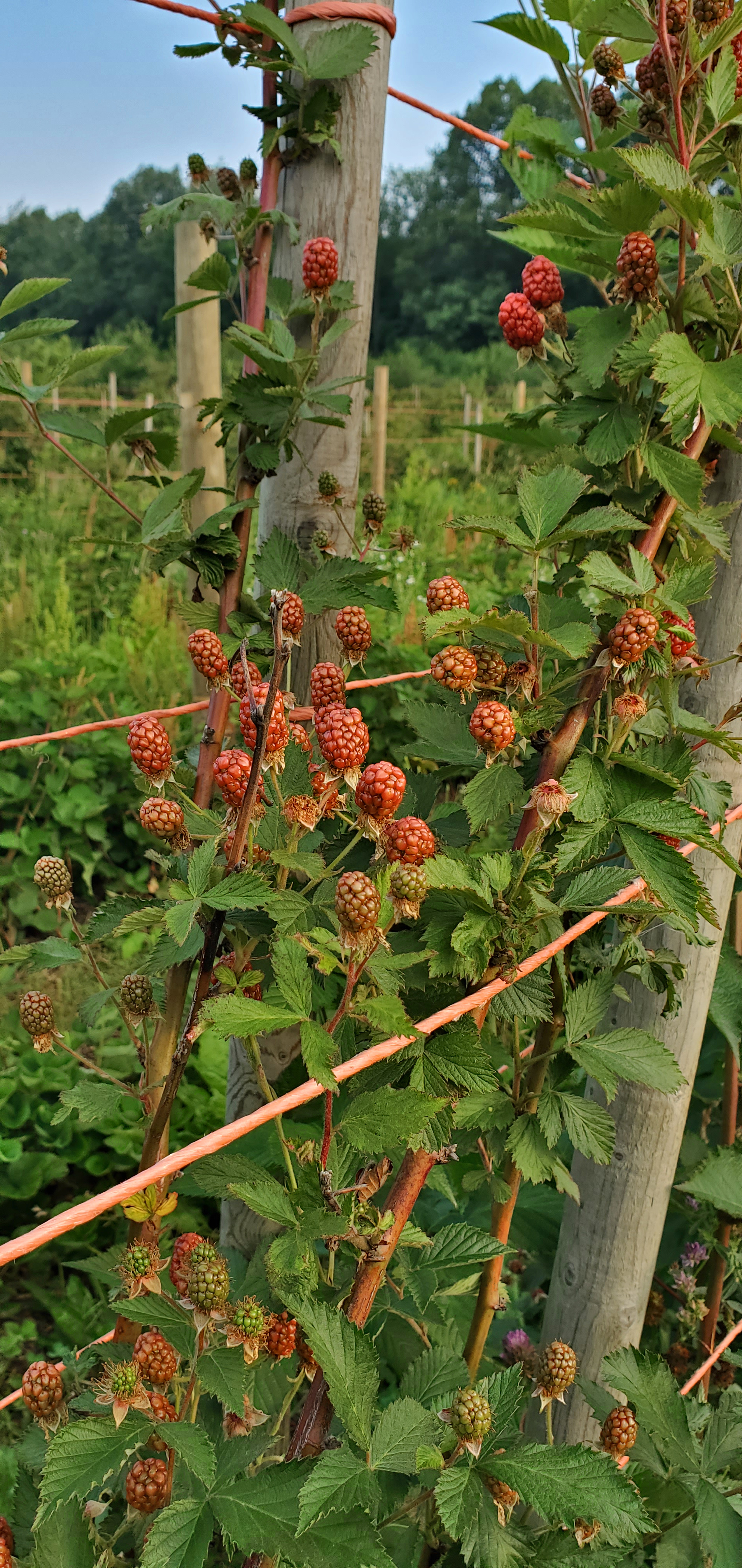Southwest Michigan fruit update – July 6, 2021
Summer fruit harvest is underway for berries and tree fruit.

Weather
Scattered rain early last week resulted in half an inch to an inch and a half of rain for the region. The week started warm with highs in the 80s, cooling to 70 degrees Fahrenheit to start the weekend. By Monday, the high was back up to near 90 F for much of the region.
This coming week will see slightly lower temperatures with highs in the upper 70s for the week. Lows will be near 60. The best chance of rain will be on Thursday.
Soils still have some moisture from all the rain in the last two weeks. This soil moisture has come at the right time. Plants are fully leafed out and July and August are when plants use the most water.
With the warmer week, we picked up a number of growing degree days (GDD) last week: 202 GDD base 42 and 146 GDD base 50.
|
Southwest Michigan GDD summary from March 1 - July 4, 2021 | |||
|---|---|---|---|
|
Station |
GDD 42 F |
GDD 45 F |
GDD 50 F |
|
Benton Harbor (SWMREC) |
1888 |
1619 |
1225 |
|
Lawton (Lawton) |
1911 |
1640 |
1234 |
|
Fennville (TNRC) |
1693 |
1438 |
1067 |
|
Average for the SW region |
1863 |
1596 |
1201 |
|
Average last week |
1661 |
1415 |
1055 |
Tree fruit
Resumption of dry and hot conditions has put water stress on young trees. San Jose scale males began showing up in the Trevor Nichols Research Center trapline on May 24 (biofix). San Jose scale control in the summer is focused on crawler control. Crawlers emerge about 400 GDD base 51 F after biofix, which is occurring now in much of the region. Japanese beetles are continuing to emerge.
Apricot harvest continues in the area. Ripening fruit has increased susceptibility to brown rot.

Early season peach and nectarine varieties Desiree, Earlystar and PF Early Eight Ball are developing red blush. Varieties prone to bacterial spot are developing yellow leaf tips. The most common insect problems affecting fruit now are oriental fruit moth and tarnished plant bug. Fruit turning from green to yellow/red and with insect injury have increased susceptibility to brown rot.
In cherries, sweet cherry harvest is ending. Tart cherries are now being harvested. Some wind whip damage from recent rains is present on some fruit. Spotted wing Drosophila (SWD) catches continue to be low but should increase soon. The low numbers are probably due to the hot, dry spring. With the wet conditions of the last couple weeks and abundant wild ripe berries, we expect numbers to increase in the next week or two. Cooler weather will also increase SWD numbers. Late harvested tart cherry blocks may need protection.
Since the early spring was so dry, cherry leaf spot symptoms are scarce for this time of year, but recent rains have been very favorable for infection.
In plums, early season plumcot (a plum-apricot hybrid) variety Spring Satin will be ripe within a week, with Early Golden and Methley following soon after. Plums are generally not susceptible to SWD until the fruit are noticeably soft.
Apple fire blight symptoms are still relatively rare. Sufficient wetting has occurred to increase the risk of sooty blotch and flyspeck infection on fruit. Codling moth, obliquebanded leafroller and oriental fruit moth flights and mating are continuing. Codling moth entries are becoming easier to see as the larvae get larger and push more frass out. The Trevor Nichols Research Center has reported catching apple maggot at low levels in the past two weeks.

Small fruit
Grape fruit size is increasing. Labrusca grapes are nearing bunch closure. Many hybrid wine grapes are already at berry touch or bunch closure. Vinifera grapes are at buckshot berry to berry touch, depending on variety and site. May 25-27 can be used as general dates for wild grape bloom in southwest Michigan. This is used for determining grape berry moth biofix. According to the grape berry moth model on Enviroweather, egglaying of the second generation should have begun between June 30 and July 3, depending on location. There were several disease infection events with the recent storms.
Protectant fungicide sprays to control Phomopsis, black rot, downy mildew and powdery mildew are the management focus for the month after bloom. Anthracnose has also recently been found. Wine grape growers will also want to include botrytis in their disease management plans.

Blueberry harvest has begun. With all this rain, disease control should focus on protecting green fruit from anthracnose and alternaria. Wet fields are making spraying difficult, and many growers are using aircraft to get their sprays on. SWD numbers have been very low across the region. This is probably due to the hot, dry conditions in May and early June. With cool wet weather and the ripening of wild berries such as bush honeysuckle and black raspberry, growers can expect to see increased numbers in about a week.
Michigan State University is participating in a USDA-funded survey asking blueberry growers about their pollination practices. If you can, please take a few minutes to fill out the survey.
Strawberry harvest has ended. Renovation should begin as soon as you can work in the field.
Raspberry harvest has begun in Berrien County, with the harvest of both red and black raspberries. Blackberry bloom is ending. Fruit is sizing and coloring. SWD larvae were found in unsprayed backyard fruit last Friday. Raspberries are very attractive to SWD, and we expect number to increase in the next week.

Miscellaneous crops
Chestnut bloom is continuing.
Hazelnut bloom has begun.
Currant harvest is beginning.
Cranberry bloom is ending.
Upcoming meetings
Viticulture Field Day will be returning to an in-person event this year. The event location is 12 Corners Winery on July 28. This will be an all-day event beginning at 9 a.m. The traditional steak dinner and wine tasting will return. There will be limited attendance. Pre-registration is highly recommended.
Related articles
- Southwest Michigan fruit update – June 29, 2021
- Summer options for controlling San Jose scale in Michigan tree fruit crops
- Michigan grape scouting report – June 30, 2021
- Pest management approaches in a winter or freeze damaged grape vineyard
- Banning black rot and Phomopsis from young grape clusters
- Renovate perennial strawberry fields to maximize yield next year



 Print
Print Email
Email
